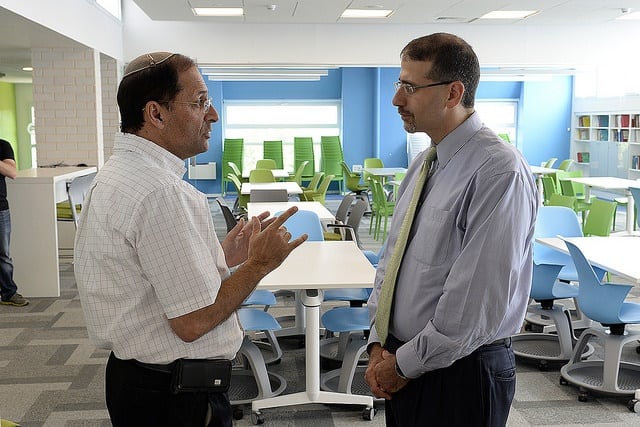Great teaching is of course key to the educational success of students, but classrooms also play an important role in helping pupils to excel. While poorly planned learning environments can disrupt concentration and demotivate students, attractive and practical classrooms help them to thrive. With this in mind, it’s important to understand what exactly makes a great classroom. To give you a clearer idea, here are some essential features of an effective learning environment.
A versatile layout with good sight lines
Gone are the days when regimented rows of desks or benches were considered the gold standard of classroom design. This old-fashioned approach was highly restrictive and it often resulted in poor lines of sight between teachers and their students. In contrast, forward thinking schools and colleges are increasingly switching onto the benefits of providing flexible, versatile environments that can accommodate a range of teaching methods and support individual learning. Well planned rooms can be adapted for everything from theory lessons to practical tasks, demonstrations and group work.
The furniture you select and the way you position it in the room will determine how flexible the setup is. For practical environments such as science labs, you may require student benching that permits group learning, allows teacher-focussed classes and minimises set up time for practical experiments. The Hot Corners showcased on the website of classroom design specialists innova-solutions.co.uk are a good example. These work benches address the need to have a functional classroom and a lab in the same space, giving students plenty of room to do both practical and theory work. They also make it easy for people to work in groups or to switch back to facing the teacher on the ‘long’ wall of the classroom.
Whichever layout you select, it’s important that people are able to move around easily and that there are clear lines of sight between students and teachers.
Effective storage solutions
Too much clutter can have a negative impact on students’ ability to concentrate, so effective storage is a necessity in classrooms. As well as traditional solutions, like bookcases, bag stores, cupboards and lockers located around the perimeter of rooms, there are more innovative products on offer that can save space and give learning areas a more contemporary look and feel. For example, teacher walls featuring integrated storage are rising in popularity. These multi-purpose storage systems can be custom made to any shape and size and they help to free up space in the rest of the room. They also ensure that teachers have convenient access to a range of resources. Meanwhile, workbenches featuring in-built storage are another space saving option.
Inspiring décor
From attractive lighting to well-chosen wall colours, an aesthetically pleasing classroom can help to stimulate learning. In rooms designed for younger students, the use of bright, bold colours can be particularly inspiring, while learning areas created for older pupils tend to benefit from more muted décor. All classrooms can benefit from eye-catching displays. From impressive graphics to inspirational quotes, there are a number of extras that can help to bring these rooms to life and motivate students.
If you’re designing a new classroom, it’s useful to involve your teachers and students in the process. Finding out what they want will help ensure that everyone’s happy with the end result.




